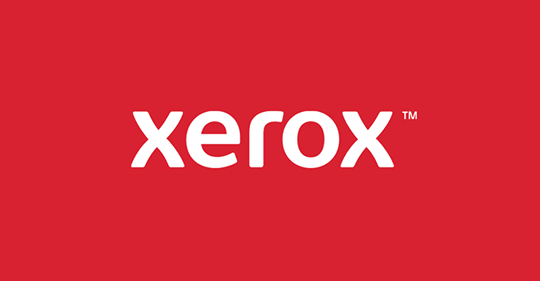Printing mainstay Xerox targets innovation and a fast-growing market, fulfilling promises in stepping into 3D printing.
At this week’s Investor Day, Xerox announced a three-year roadmap with a five-pronged vision for innovation. These five strategic focuses include:
-
Improve our core technology business
-
Expand services & software
-
Capitalize on the opportunity in SMB
-
Transform client digital experience
-
Drive innovation and new growth businesses
The last of these strategies in turn breaks out into four subcategories itself:
-
Digital packaging and print
-
AI workflow assistants for knowledge workers
-
3D printing / digital manufacturing
-
Sensors & services for the Internet of Things
Xerox is stepping into 2019 with, clearly, a multifaceted approach to next-generation technologies. So far as 3D printing is concerned, the company is particularly focused on the digital manufacturing aspect — that is, not prototyping, but manufacturing. To build up the capabilities it sees its customers as wanting, and to fit into what it describes as a current $8 billion global market with a 25% CAGR, Xerox realizes it won’t be doing it all in-house. The strategy to participate in additive manufacturing encompasses partnerships and acquisitions along with internal developments.
Xerox plans to participate in both the plastics and metals sides of 3D printing, targeting lower-cost processes for both. In a move announced during the Investor Day presentations, the metals strategy will be powered by the acquisition of Vader Systems.
Vader Systems developed a unique metal 3D printing process that uses standard welding wire, keeping costs relatively lower compared to specialized metal powders used by many competitive metal AM processes. With Vader’s processes powering the plan, Xerox is looking toward “low-cost metal printing with more metals” as a key element of its digital manufacturing strategy.
On the polymers side, Xerox is targeting “10x faster plastics printing and low-cost plastic powders.” The company notes that it will “utilize M&A and co-development” and expects both plastics and metals “to move into product commercialization” in 2019.
![[Image: Xerox]](https://fabbaloo.com/wp-content/uploads/2020/05/xerox3droadmap_img_5eb09d398ff6a.png)
Publishing a roadmap in 3D printing isn’t an unexpected move. Not only have many of Xerox’s competitors in traditional 2D printing added 3D printing (successfully) into their operations, the company has previously announced its intent to participate.
Strategies reach broadly across the expansive Xerox portfolio. The company, whose brand has long been synonymous with photocopying, has needed to grow with the times if it wanted to recapture a position at the forefront of technology companies.
As Xerox Vice Chairman and CEO Giovanni (John) Visentin explained in an October 2018 earnings call:
“As we previously communicated, we are revamping our innovation business model. This is essential to returning Xerox to technology leadership, positioning us for long-term success and ensuring proper monetization of our innovation….
Our leading expertise in technology in printing uniquely positions us to move into adjacencies that share similar core technology requirements. For instance, we are developing a road map to participate in 3D printing. We currently manufacture 3D print heads that we OEM, where we have differentiated capabilities around print technologies, materials, toner and software that will enable 3D printing to move to the next level of adoption for the production of end-use industrial parts.”
In addition to Vader’s known technology, it sounds like the polymeric plan will be an inkjet process. Like other 2D printing companies, this move fits in with existing expertise and is a smart way to transition into 3D.
And, like other large companies incorporating 3D printing into an existing business model, Xerox says it will have a “startup-like model” for the technologies in its innovation strategy.
![[Image: Xerox]](https://fabbaloo.com/wp-content/uploads/2020/05/xeroxstartuproadmap_img_5eb09d3a15094.png)
No details about the Vader acquisition have been announced; indeed, Vader’s URL simply redirects to the Xerox “Disrupting Manufacturing with 3D Printing” page. This page, incidentally, has an interestingly vague-but-aggressive statement of being ready to lead the way in this road to 3D printing in manufacturing:
“Xerox is constantly looking for new ways to deliver more value to our customers. We are leveraging our experience and expertise in digital printing to polymer and metal 3D printing technologies and will introduce new equipment, materials, services and design tools to the market.
The results? Customers will be able to get complex parts delivered faster. Take advantage of unique materials to enhance performance. Lower costs. And optimize build volumes, part properties, and support structures with advanced design and planning tools.
3D printing is poised to transform manufacturing. And we’re ready to lead the charge.”
Other interesting standouts from the Investor’s Day presentation include a look at the three-year roadmap. In 2018, the company performed a “deep analysis of market and revenue trends” — and was the year the CEO spoke more openly about a 3D printing strategy. In 2020, they plan to “commercialize select R&D IP”; perhaps 3D printing (though this may come earlier as alluded to in the above slide)? Revenue is projected for 2021 for 3D printing, sensor, AI, and IoT plans.
![[Image: Xerox]](https://fabbaloo.com/wp-content/uploads/2020/05/xeroxroadmap_img_5eb09d3a85cd2.png)
What we do know for sure: another large global company with significant name recognition is coming into 3D printing. Game on.












A blog post reveals much of what happens behind the scenes at 3D print service Shapeways.